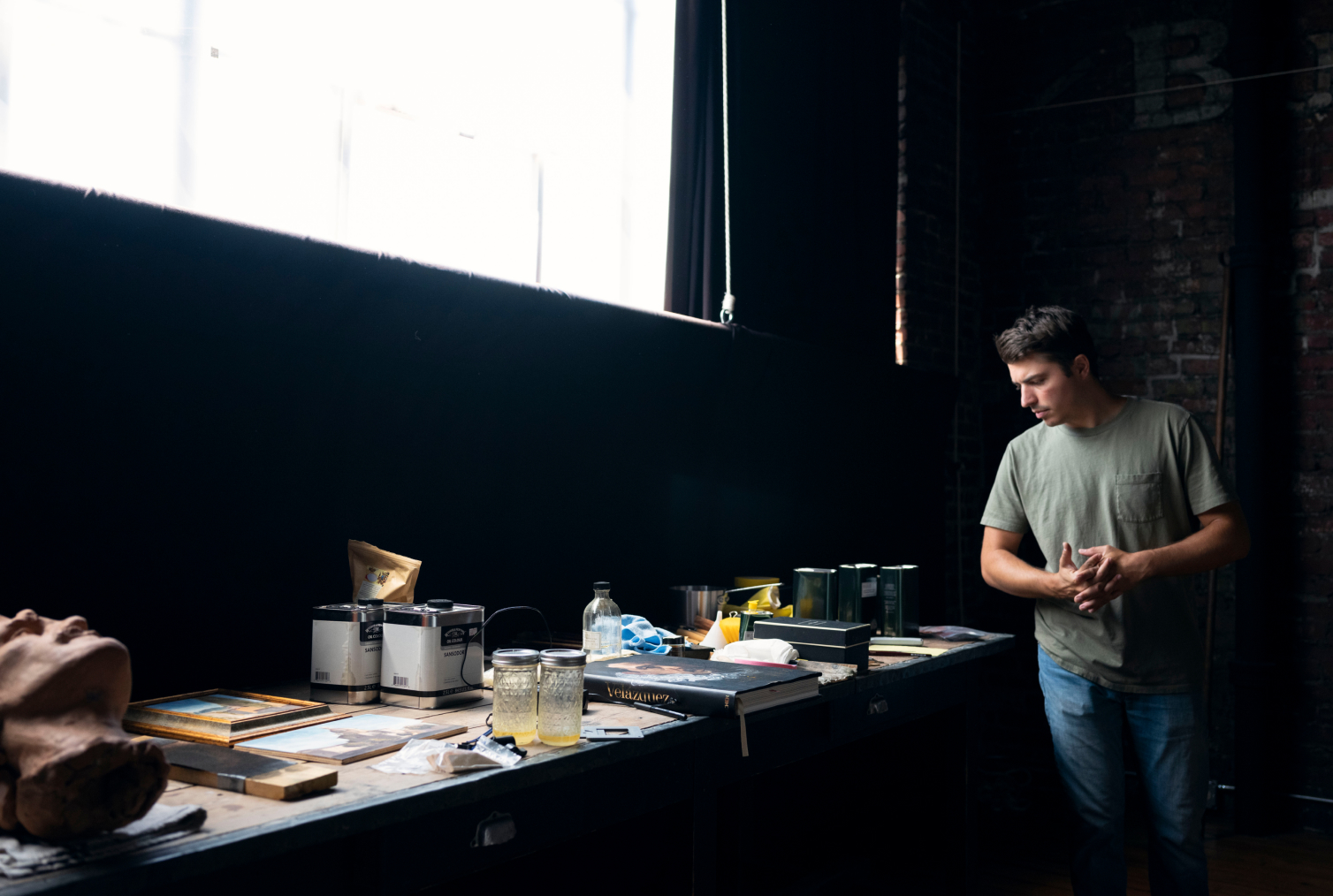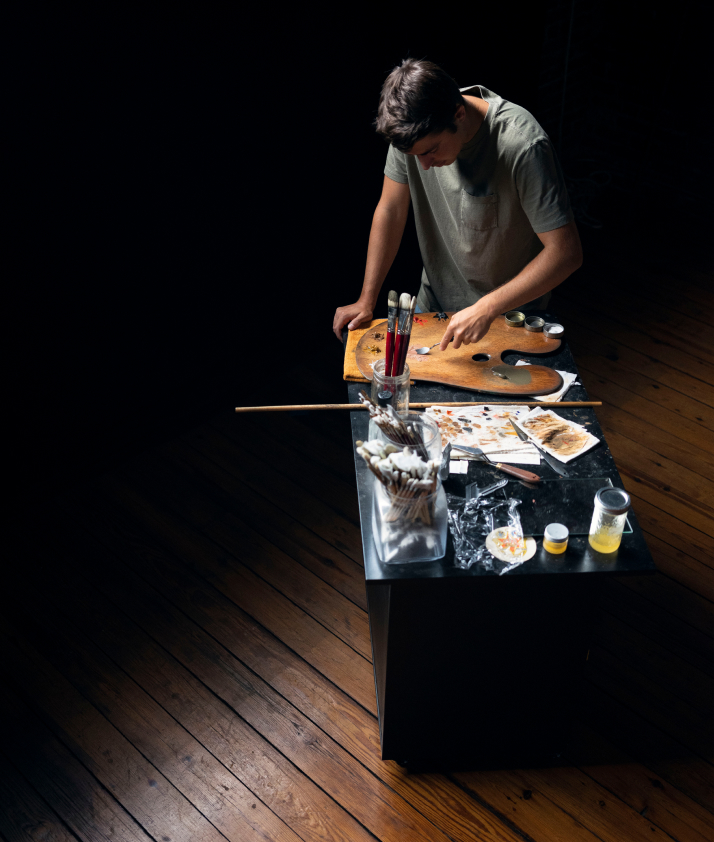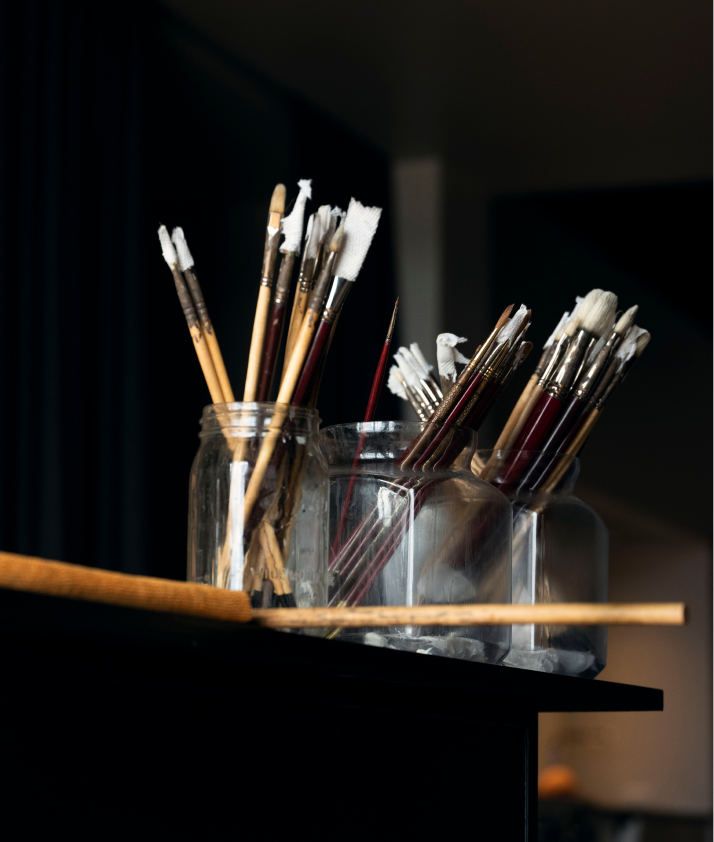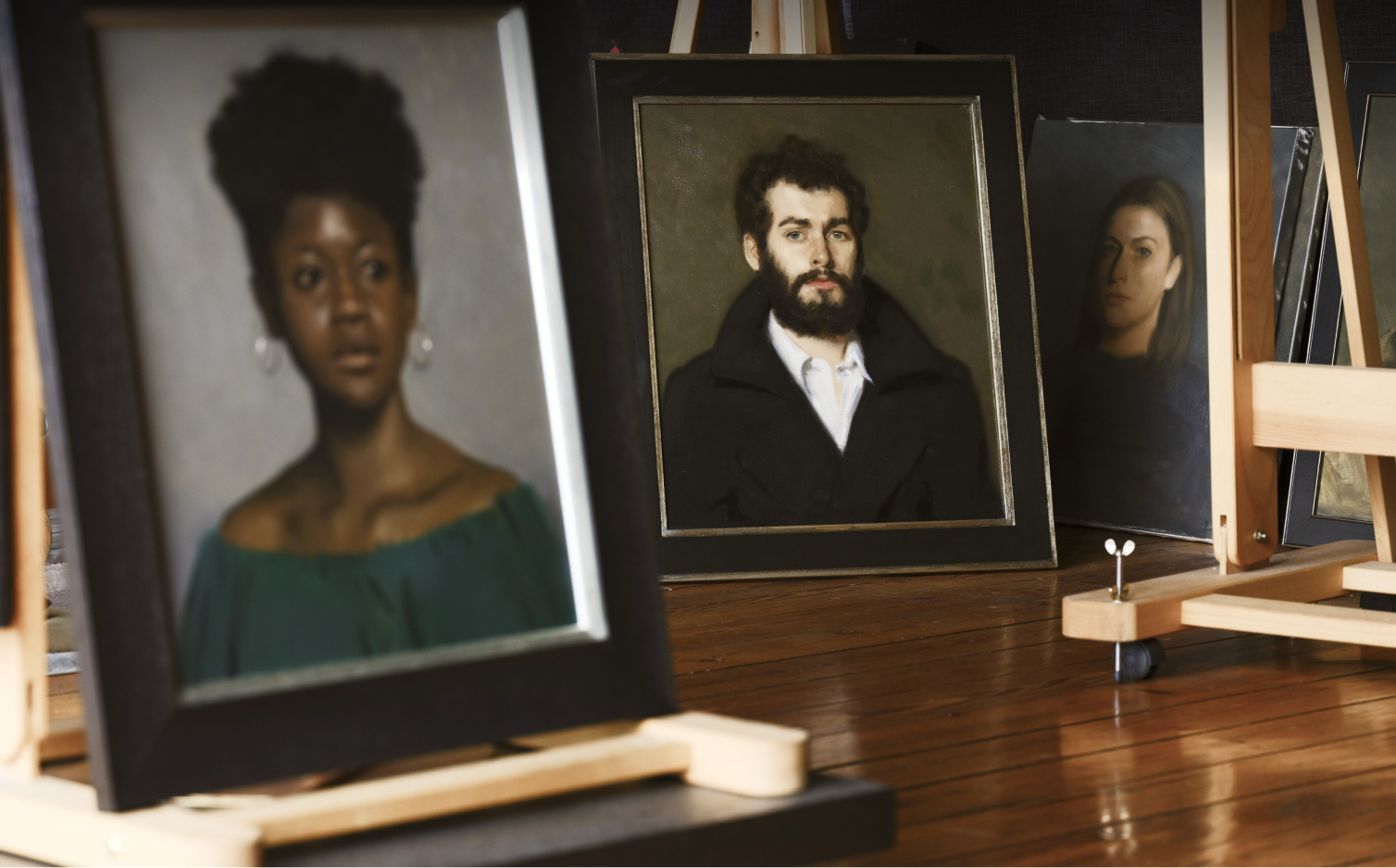Approach
The sight-size technique of drawing and painting originated in the practices of 16th and 17th century European painters such as Titian, Velazquez, and van Dyck and was employed extensively by Sargent and his contemporaries.
Using only live models and natural light, this approach allows for an unmediated visual relationship between the artist and his subject.
Images are drawn or painted from life and to the scale of life. The artist places the paper or canvas next to the subject and repeatedly moves ten or so steps back between pencil or brush strokes in order to see both the model and the image from a distance and in full.
Using an angled light source from above and occasionally a small mirror to refresh the artist’s eye, this time-honored method of portraiture emphasizes and facilitates observation and selection.
The aim is to be convincingly representational—the portraits bear a striking likeness to the models—but also interpretive. Figures are somewhat impressionistic when viewed at close range but gain clarity and strength when viewed from afar.
William employs a similarly active approach to sculpting heads, moving back and forth from both sculpture stand and model as he shapes the clay. Sculptures are likewise life-size.




Approach

The sight-size technique of drawing and painting originated in the practices of 16th and 17th century European painters such as Titian, Velazquez, and van Dyck and was employed extensively by Sargent and his contemporaries.
Using only live models and natural light, this approach allows for an unmediated visual relationship between the artist and his subject.
Images are drawn or painted from life and to the scale of life. The artist places the paper or canvas next to the subject and repeatedly moves ten or so steps back between pencil or brush strokes in order to see both the model and the image from a distance and in full.
Using an angled light source from above and occasionally a small mirror to refresh the artist’s eye, this time-honored method of portraiture emphasizes and facilitates observation and selection.
The aim is to be convincingly representational—the portraits bear a striking likeness to the models—but also interpretive. Figures are somewhat impressionistic when viewed at close range but gain clarity and strength when viewed from afar.
William employs a similarly active approach to sculpting heads, moving back and forth from both sculpture stand and model as he shapes the clay. Sculptures are likewise life-size.


